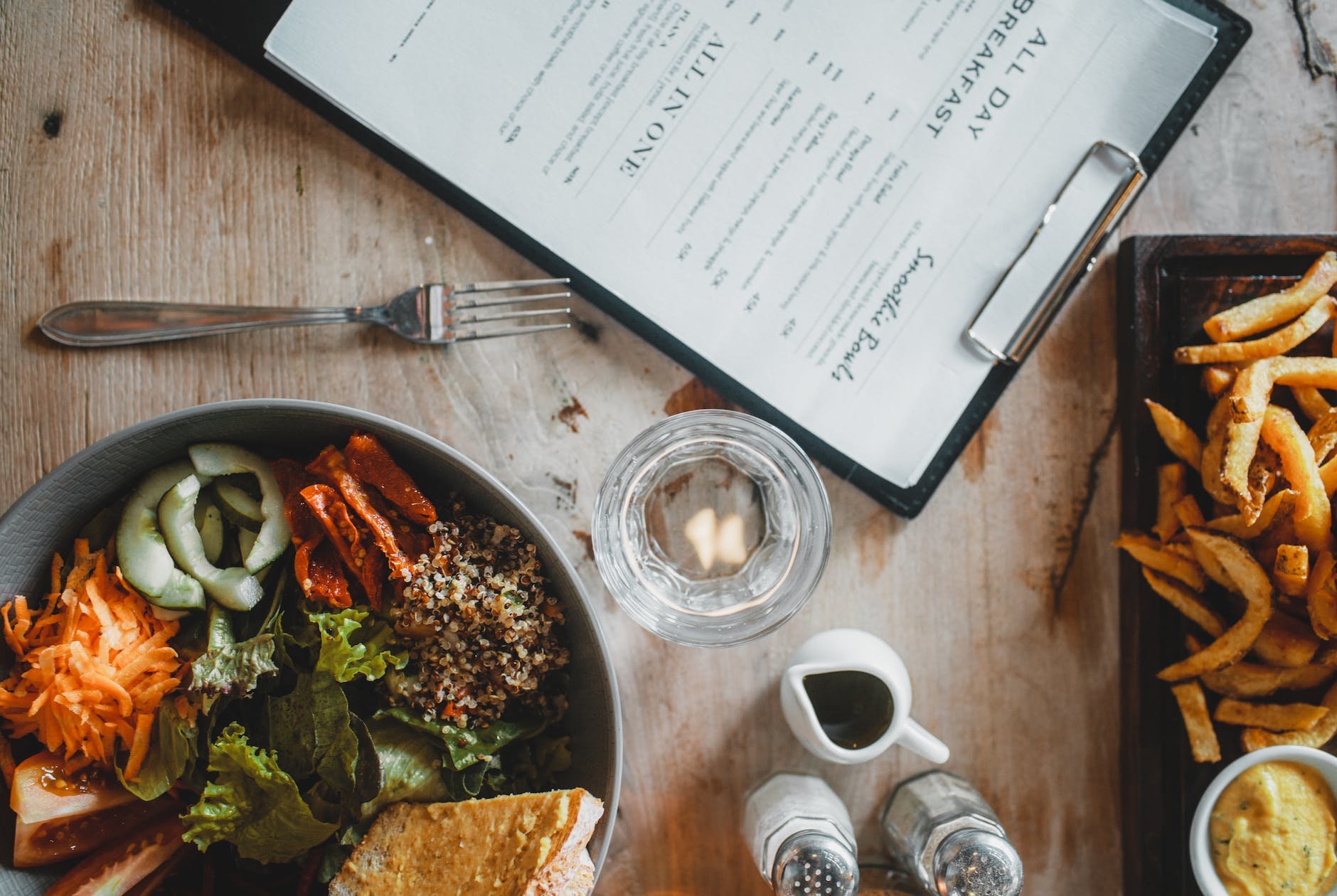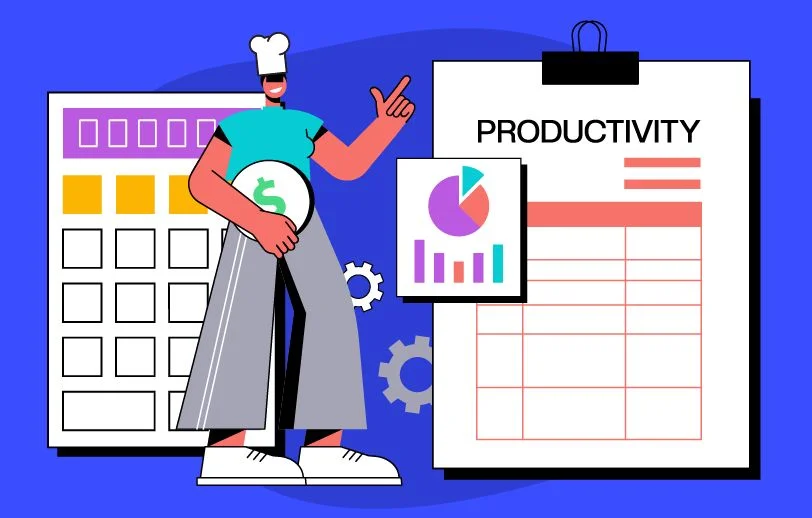Fewer surprises. Greater restaurant efficiency.
Fewer surprises. Greater restaurant efficiency.
In an industry with slim profit margins and high overhead costs, maximizing productivity in a restaurant is crucial to achieving financial success. However, measuring and improving restaurant productivity can be a daunting task for even the most experienced restaurant owners and managers.
Are you struggling to manage high labor costs, inefficient workflows, or slow table turnover times? If so, you're not alone. These are just a few of the common pain points that restaurant operators face when it comes to improving productivity. The good news is that there are several different ways to measure restaurant productivity, each with its own unique benefits and drawbacks.
In this blog post, we'll discuss the challenges of maximizing productivity in the restaurant industry and explore four different methods for calculating restaurant productivity. These techniques will help you identify areas for improvement and streamline your operations. So, if you're looking to increase your restaurant sales and take your restaurant to the next level, read on!
What is restaurant productivity?
Restaurant productivity shows how efficient your restaurant is at converting input (labor hours) into output (food and service).
Measuring and keeping track of restaurant productivity helps you evaluate the efficiency of your staff and the overall profitability of your restaurant.
It’s usually calculated for the entire staff as a group, rather than for individual employees.
Factors influencing restaurant productivity
There are quite a few factors that influence productivity for businesses in the restaurant industry. Here are a few main ones:
Menu items
The number of items on your menu and their complexity can have a big impact on how many meals your restaurant can actually serve in the span of an hour or day.
Having a large menu with items that are more complicated to prepare and have longer preparation times will reduce the number of meals you can serve per labor hour.
On the other hand, a simpler menu will allow you to serve a higher number of customers per hour, improving your restaurant’s productivity.

Type of service
Your restaurant productivity is also influenced by the type of service you provide.
Fine-dining establishments, for example, will serve fewer meals per labor hour compared to quick-service restaurants.
Additionally, due to the nature of their menu and the dishes they serve, fine-dining restaurants will often employ more experienced staff. This, in turn, will lead to increased labor costs due to higher wages.
Kitchen layout
When designing a restaurant, most of the attention is given to the seating area, which can help improve the labor productivity of your front-of-house staff.
However, the kitchen layout often ends up being an afterthought. This can slow down your kitchen staff considerably and have a negative impact on overall productivity.
For a productive kitchen environment, all storage areas and work surfaces needed to prepare an item should be placed in proximity to each other. If this is not the case, then it’s likely that you’ll need to hire more back-of-house staff than would otherwise be necessary.

Standardization
Standardization helps optimize kitchen processes and allows you to eliminate inefficiencies in a restaurant kitchen.
Standardizing all procedures and recipes in your restaurant can improve productivity substantially.
Employee skill level and training
How skilled each restaurant employee is at doing their job, as well as how well trained they are, will have perhaps the biggest impact on employee productivity.
This makes it crucial for restaurants to provide adequate training for all staff members.
Cross-training, in particular, can be a good way of increasing productivity. If staff members know how to perform tasks that are outside of their regular role, your restaurant will be able to operate with a smaller number of employees.
4 methods of calculating restaurant productivity
In this section, we’ll go over the four different ways you can measure and calculate restaurant productivity.
1. Covers per labor hour
One way to measure your restaurant’s productivity is to determine how many covers it generates per hour of labor.
This is a fairly reliable way to get a better understanding of the productivity of your restaurant, since it’s not affected by fluctuations in upselling or menu pricing changes.
To calculate covers per labor hour, simply divide the total number of covers for a given period by the total number of labor hours for that same period of time.
Formula:
Covers per Labor Hour = Total Number of Covers / Total Number of Labor Hours

The calculation should include both regular and overtime hours — one overtime hour is counted as one regular hour since the formula doesn’t take into account the dollar value of an hour of labor.
For example, let's say your restaurant serves 300 covers in a week and your staff worked a total of 50 hours during that same week. To calculate the covers per labor hour, you would divide 300 by 50, which gives you 6. This means that your restaurant generates an average of 6 covers per hour of labor.
Pros:
- Covers per labor hour is a simple and easy-to-calculate metric that provides a quick snapshot of your restaurant's productivity.
- It helps you to identify how efficiently your restaurant is utilizing labor.
- Since this method does not take into account upselling or menu pricing changes, it provides a more accurate reflection of how your restaurant is performing.
Cons:
- Covers per labor hour may not be a perfect indicator of overall restaurant productivity since it only measures one aspect of the business.
- It does not account for differences in the complexity of the menu or the skill level of the staff.
This method doesn't consider other factors such as the quality of service, customer satisfaction, or employee morale, which are also important aspects of restaurant performance.
Overall, covers per labor hour can be a useful tool for monitoring your restaurant's productivity, but it should be used in conjunction with other restaurant metrics to get a more complete picture of your business.
2. Labor cost per cover
You can also measure restaurant productivity by calculating how much it costs, in terms of labor, to serve one cover.
To do this, simply divide your total labor costs by the total number of covers for a given period.
Formula:
Labor Cost per Cover = Total Labor Costs / Total Number of Covers

Let's look at an example: Your restaurant had a total labor cost of $5,000 for a given week and served 500 covers during that same week. To calculate the labor cost per cover, you would divide $5,000 by 500, which gives you $10. This means that it costs your restaurant an average of $10 in labor costs to serve one cover.
Pros:
- Labor cost per cover is a useful metric for analyzing the cost efficiency of your restaurant's operations.
- It can help you to identify areas where you may be overstaffed or understaffed, and adjust your labor costs accordingly. To battle staffing issues, automated tools like Lineup can help you accurately predict labor and demand for upcoming days and weeks.
- This method is also helpful for planning menu item pricing, as it allows you to factor in labor costs when determining the price of a dish.
Cons:
- Labor cost per cover does not take into account the quality of service provided or the level of customer satisfaction.
- It does not account for factors outside of labor costs, such as food costs or overhead expenses.
- This method assumes that all covers require the same amount of labor, which may not be the case if your menu items vary significantly in complexity.
Overall, labor cost per cover can be a valuable tool for assessing the cost efficiency of your restaurant's operations and planning menu item pricing. However, it should be used in conjunction with other metrics to get a more complete picture of your business's performance.

3. Sales per labor hour
The sales per labor hour metric helps you gauge staff productivity and enables you to determine appropriate staffing levels.
As per the NRA (National Restaurant Association), limited-service restaurants typically achieve a median total sales of $45.33 per hour per full-time equivalent employee, which amounts to approximately $68,571 per year.
It’s calculated by dividing the total sales revenue generated by the total number of labor hours put in to generate that revenue.
Formula:
Sales per Labor Hour = Total Sales Revenue / Total Labor Hours

In most cases, you won’t have to calculate this metric on your own, though. Your POS (point-of-sale) system should be able to do this for you.
Assuming your restaurant made $50,000 in sales revenue for a given week, and your staff worked a total of 1,000 hours during that same week. To calculate the sales per labor hour, you would divide $50,000 by 1,000, which gives you $50 per labor hour. This means that on average, your restaurant generates $50 in sales revenue for every hour of labor put in by your staff.
Pros:
- Sales per labor hour is a useful metric for assessing staff productivity and determining appropriate staffing levels. Software like Lineup can help you automate staffing by giving you accurate labor predictions for the upcoming period.
- It can help you to identify areas where labor costs may be too high or where staffing levels may not be sufficient to meet demand.
- This method is often automated through a POS system, which makes it easy to track and monitor over time.
Cons:
- Sales per labor hour does not take into account factors such as the quality of service provided or the level of customer satisfaction.
- It assumes that all sales revenue is directly related to labor hours, which may not always be the case (e.g. sales revenue may be affected by marketing efforts, menu pricing, etc.).
- This method does not account for differences in sales revenue based on the type of menu items served.
While sales per labor hour can be a valuable tool for evaluating staff productivity and pinpointing areas for improvement in your restaurant's operations, it should be combined with other metrics to obtain a more comprehensive understanding of your business's performance.
4. Labor cost percentage
The labor cost percentage shows you how much of your restaurant’s revenue is spent on labor costs. The average labor cost percentage for restaurants is around 30%. A labor cost percentage higher than 30% is a sign that you likely need to look into different ways of reducing labor costs to improve overall productivity.
You can calculate it by dividing your total labor cost by the total amount of revenue your restaurant has generated in a given period, and then multiplying the result by 100.
Formula:
Labor Cost Percentage = Total Labor Costs / Total Sales Revenue

To illustrate, let's say your restaurant had total labor costs of $10,000 for a given month and generated $50,000 in sales revenue during that same month. To calculate the labor cost percentage, you would divide $10,000 by $50,000, which gives you 0.20 (or 20%). This means that labor costs make up 20% of your restaurant's total sales revenue.
Pros:
- Labor cost percentage is a useful metric for assessing the cost efficiency of your restaurant's operations.
- It can help you to determine appropriate staffing levels and identify areas where labor costs may be too high.
- This method is often automated through a POS system, which makes it easy to track and monitor over time.
Cons:
- Labor cost percentage does not take into account factors such as the quality of service provided or the level of customer satisfaction.
- It assumes that all sales revenue is directly related to labor costs, which may not always be the case (e.g. sales revenue may be affected by marketing efforts, menu pricing, etc.).
- This method does not account for differences in labor costs based on the type of menu items served.
This method, as the ones above, should be used in conjunction with other metrics to get a more complete picture of your restaurant's performance.
Keep restaurant productivity in check
Restaurant productivity is a big topic for restaurant owners and managers. In order to be able to improve productivity, however, restaurants first need a way to measure and track it.
Menu items, type of service, kitchen layout, standardization, and employee skill level and training are all factors that influence restaurant productivity.
While there are a lot of different ways to measure productivity at a restaurant, some of the most commonly used metrics include:
- Covers per labor hour
- Labor cost per cover
- Sales per labor hour
- Labor cost percentage
FAQs
What is an example of good productivity within the restaurant?
Good restaurant productivity involves efficient kitchen operations, accurate demand forecasting, minimal food waste, high customer satisfaction, and profitability.
What is a good employee productivity rate?
An ideal productivity rate for restaurant employees falls in the range of 70-75%. This balance ensures that they dedicate 70% or more of their time to work-related tasks, while keeping breaks to 25% or less.

Boris Mustapic is a content marketer with a decade of experience in the digital marketing industry. He specializes in helping B2B SaaS companies drive growth through strategic, product-led content marketing.
More about the author